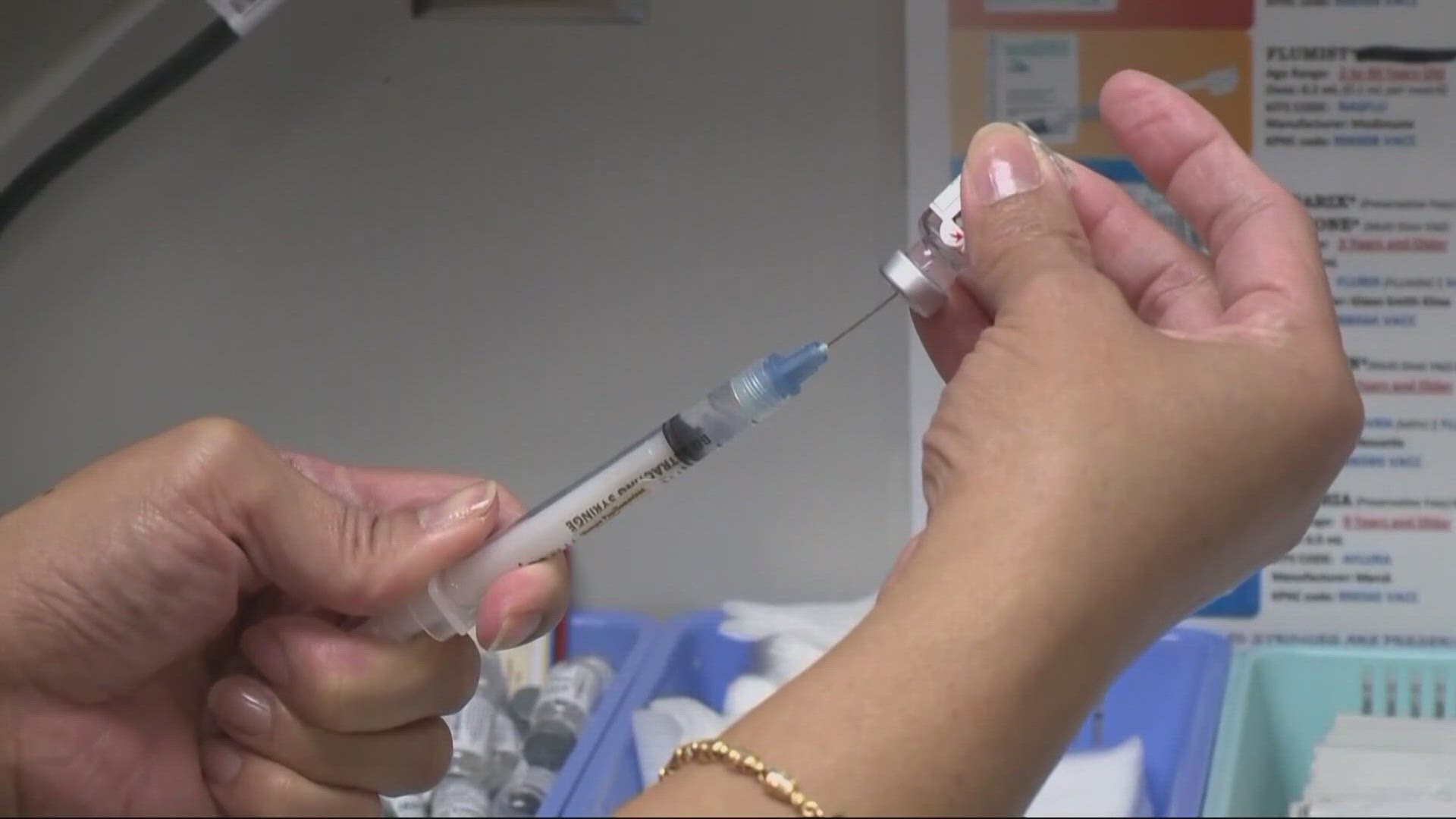PORTLAND, Ore. — Oregon's COVID infection and hospitalizations have both been trending steadily downward for weeks, and the latest forecast from Oregon Health and Science University predicts that trajectory will continue for at least another month — but a new wave is expected to set in after that.
The next wave is likely to be fueled by waning immunity, according to forecast author Peter Graven, but the current forecast model doesn't yet account for two things that could shake things up in the fall: new variants and omicron-specific vaccine boosters.
The first half of 2022 saw a series of often overlapping COVID waves in Oregon caused by a succession of increasingly contagious versions of the omicron variant. The original version, BA.1, caused an enormous spike in infections that peaked in January and then fell rapidly, bottoming back out in mid-March. Next up was BA.2, which caused a smaller but still substantial spike in April.
That second wave never really ended, because BA.2 began to be supplanted by BA.2.12.1 in May, and they both began to get outcompeted by BA.4 and BA.5 in June, with BA.5 becoming the overwhelmingly dominant strain in July.
Each strain was more contagious than the one before, pushing the average daily case rate in Oregon above 1,000 for more than four months, and pushing much of the state into the Centers for Disease Control's "high" community level in July.
No new strain has managed to gain a foothold against BA.5 in Oregon so far, and cases began to steadily drop in mid-July, falling below an average of 1,000 per day in mid-August.
The latest forecast, released Thursday, predicts a low point of 129 patients hospitalized with COVID statewide on Sept. 21, and a similarly-timed low point for infections where about 1.6% of the state's population will be actively infected.
For comparison, the current wave peaked with 5.49% of the population infected on July 13 and 464 hospitalizations on July 17. Hospitalizations were down to 292 as of Thursday, the day the report was released.
After September, the forecast shows both trend lines increasing steadily through the end of the year, although not as steeply as in January or April.
New vaccine boosters could mitigate the impact of waning immunity, Graven wrote in the report, but the model doesn't account for them yet because it's not clear how much of an impact they'll have.
On Monday, Pfizer asked for regulatory authorization for a new version of its COVID vaccine, one calibrated to target both the original virus and the BA.4 and BA.5 strains of omicron, potentially putting the boosters just weeks away from being offered to the public.
The report also doesn't account for the potential emergence of any new subvariants that could outcompete BA.5, which has been holding steady as the dominant strain. Health officials have been closely watching two newer strains, BA.2.75 and BA.4.6, according to a report from the LA Times, but it's not yet clear whether they'll overtake BA.5 worldwide.



